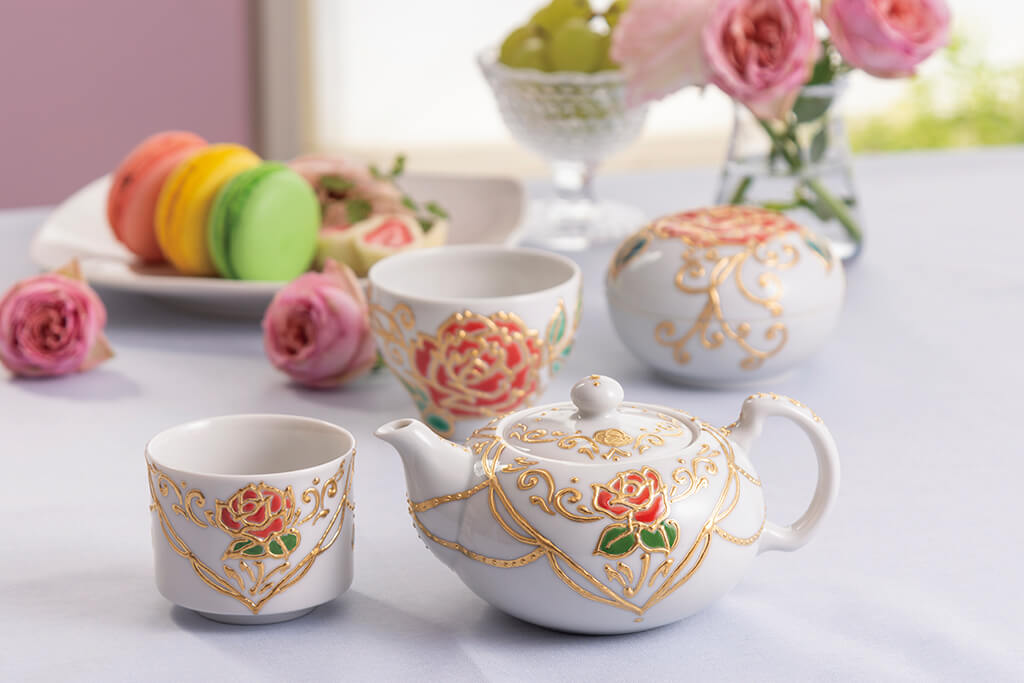The katauchi technique is a technique of placing a piece of pottery formed by ro-ro on a mold, copying the pattern and shape of the mold, and creating the base of the piece. In rokuro, it is necessary to draw the mold with a uniform thickness. If the thickness is uneven, the piece will crack or break when fired. In addition to the difficulty of drawing the pieces with a uniform thickness, Myosen Tobo maintains a uniform thickness while drawing the pieces as thin as possible. The mold with the base material is turned over and placed on the potter's wheel. As the wheel rotates, the clay is pressed against the mold. Again, the force must be constant so that the thickness is uniform. Delicate hand work. Next, the pattern of the mold is traced with a brush. Because the base material is thin, the amount of force is even more important. If the tracing force is not consistent, the thickness will be uneven, causing warping and cracking. The edge is cut to fit the mold. The edges are cut to fit the mold, creating a graceful edge. Finally, the base is finished by shaving. Finally, a single piece of base is completed.Kokuzo Kiln was founded in 1997. Kokuzo Kiln is one of the few kilns in the kutaniyaki industry that handles all production processes in-house, from molding the clay to painting and kiln firing. In addition, the kiln produces mainly earthenware, which is rare in Kutaniyaki. Kokuzo kiln's pottery has the texture and warmth of earthenware, the taste of hand-painted pottery, and is comfortable to use. However, the originality of their shapes and designs make their Kutani ware stand out from the crowd.

















